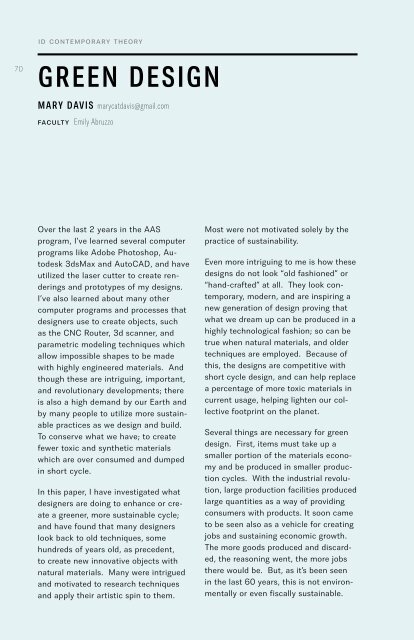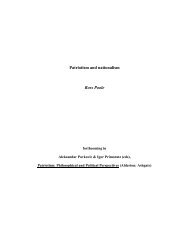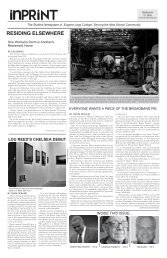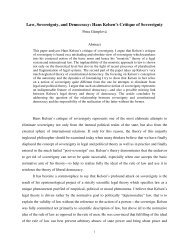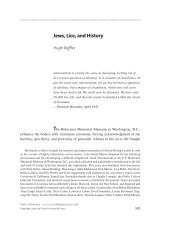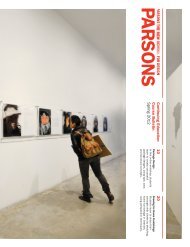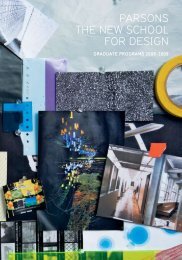PARSONS AAS INTERIOR DESIGN - The New School
PARSONS AAS INTERIOR DESIGN - The New School
PARSONS AAS INTERIOR DESIGN - The New School
Create successful ePaper yourself
Turn your PDF publications into a flip-book with our unique Google optimized e-Paper software.
70<br />
ID cONTEMPORARy ThEORy<br />
GREEN <strong>DESIGN</strong><br />
MARY DAvIS marycatdavis@gmail.com<br />
fAcULTy Emily Abruzzo<br />
Over the last 2 years in the <strong>AAS</strong><br />
program, I’ve learned several computer<br />
programs like Adobe Photoshop, Autodesk<br />
3dsMax and AutoCAD, and have<br />
utilized the laser cutter to create renderings<br />
and prototypes of my designs.<br />
I’ve also learned about many other<br />
computer programs and processes that<br />
designers use to create objects, such<br />
as the CNC Router, 3d scanner, and<br />
parametric modeling techniques which<br />
allow impossible shapes to be made<br />
with highly engineered materials. And<br />
though these are intriguing, important,<br />
and revolutionary developments; there<br />
is also a high demand by our Earth and<br />
by many people to utilize more sustainable<br />
practices as we design and build.<br />
To conserve what we have; to create<br />
fewer toxic and synthetic materials<br />
which are over consumed and dumped<br />
in short cycle.<br />
In this paper, I have investigated what<br />
designers are doing to enhance or create<br />
a greener, more sustainable cycle;<br />
and have found that many designers<br />
look back to old techniques, some<br />
hundreds of years old, as precedent,<br />
to create new innovative objects with<br />
natural materials. Many were intrigued<br />
and motivated to research techniques<br />
and apply their artistic spin to them.<br />
Most were not motivated solely by the<br />
practice of sustainability.<br />
Even more intriguing to me is how these<br />
designs do not look “old fashioned” or<br />
“hand-crafted” at all. <strong>The</strong>y look contemporary,<br />
modern, and are inspiring a<br />
new generation of design proving that<br />
what we dream up can be produced in a<br />
highly technological fashion; so can be<br />
true when natural materials, and older<br />
techniques are employed. Because of<br />
this, the designs are competitive with<br />
short cycle design, and can help replace<br />
a percentage of more toxic materials in<br />
current usage, helping lighten our collective<br />
footprint on the planet.<br />
Several things are necessary for green<br />
design. First, items must take up a<br />
smaller portion of the materials economy<br />
and be produced in smaller production<br />
cycles. With the industrial revolution,<br />
large production facilities produced<br />
large quantities as a way of providing<br />
consumers with products. It soon came<br />
to be seen also as a vehicle for creating<br />
jobs and sustaining economic growth.<br />
<strong>The</strong> more goods produced and discarded,<br />
the reasoning went, the more jobs<br />
there would be. But, as it’s been seen<br />
in the last 60 years, this is not environmentally<br />
or even fiscally sustainable.


